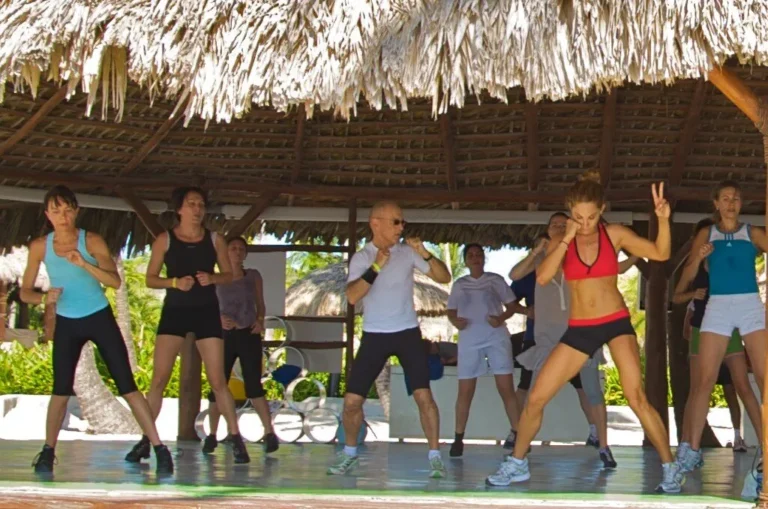Many fitness enthusiasts are drawn to the intensity of Tabata training, a high-intensity interval workout that can yield impressive results in just a fraction of the time. I’ve found that this method, which consists of 20 seconds of all-out effort followed by 10 seconds of rest, is not only efficient but also incredibly effective for improving both endurance and metabolism. In this post, I will guide you on how to get started with Tabata training, highlighting its benefits and considerations to ensure you maximize your workout while minimizing injury risks.
Key Takeaways:
- Tabata training is a high-intensity interval workout that follows a 20 seconds on, 10 seconds off format, typically repeated for 4 minutes (8 rounds). This allows for maximum effort and efficient calorie burning in a short period.
- To start Tabata training, choose a few exercises that you enjoy, such as squats, burpees, or push-ups, and gradually build up your intensity while ensuring proper form to avoid injury.
- Incorporate Tabata into your fitness routine 2-3 times a week, allowing for rest days in between to aid recovery and prevent overtraining.
What is Tabata Training?
Your fitness routine can benefit immensely from Tabata training, a high-intensity interval workout that lasts just four minutes but packs a powerful punch. This form of training demands short bursts of intense exercise followed by brief rest periods, making it an efficient choice for those looking to enhance their endurance, strength, and overall fitness in a time-constrained schedule.
Definition and Overview
On a basic level, Tabata training consists of eight rounds of 20 seconds of intense exercise followed by 10 seconds of rest. This protocol allows you to maximize efficiency, as it elevates your heart rate quickly and keeps it elevated, leading to increased calorie burn even after the workout has ended.
Historical Background
Tabata training originated from Japan in the late 1990s when Dr. Izumi Tabata and his team studied the effects of high-intensity interval training on athletes. They discovered that this form of exercise not only improved aerobic and anaerobic capacities but also was more efficient compared to moderate, steady-state workouts. As a result of their groundbreaking research, Tabata training has become a staple in the fitness community around the globe.
At its core, the Tabata protocol revolutionized how fitness enthusiasts approach workouts due to its time-efficient nature and fast results. By focusing on high-intensity intervals and demanding effort, it can enhance physical performance significantly, making it a favored method among athletes and casual gym-goers alike. As you launch on your Tabata journey, it’s important to focus on maintaining proper form throughout the intense bursts to avoid injuries and maximize effectiveness.
Benefits of Tabata Training
Some of the major benefits of Tabata training include improved cardiovascular endurance, enhanced metabolism, and increased muscle strength. This high-intensity workout method not only saves time but also delivers effective results in a shorter period. By engaging in these short bursts of intense exercise, you maximize calorie burn, making it an excellent choice for those looking to lose weight or maintain fitness levels efficiently.
Physical Health Advantages
Across various fitness levels, Tabata training offers significant physical health advantages. It strengthens your heart, enhances lung capacity, and boosts overall stamina. Engaging in this rigorous format can also lead to better blood circulation and improved muscle tone, providing a comprehensive approach to enhancing your physical well-being.
Mental Health Benefits
Between the physical gains, Tabata training also contributes positively to mental health. The endorphins released during intense workouts can uplift your mood and help alleviate feelings of anxiety or stress. This aspect is often overlooked, but it plays a vital role in maintaining a balanced and healthy lifestyle.
Plus, you should also consider that the vigorous nature of Tabata can improve your focus and discipline. With each session, I notice my ability to handle stress improves, and my energy levels rise significantly. Besides that, the sense of achievement I feel after completing a tough workout boosts my self-esteem and motivation, making it easier for me to tackle daily challenges head-on. Overall, it’s not just about your physical condition, but also nurturing a healthier mental state.
How to Start Tabata Training
To kick off your Tabata training, I recommend first familiarizing yourself with the structure of a typical workout. A classic Tabata session involves 20 seconds of intense exercise followed by 10 seconds of rest, repeated for a total of eight rounds. You can start slowly, gradually increasing the intensity and variety of your workouts as you gain confidence and endurance.
Required Equipment and Setup
Around your home, you may need minimal equipment to begin your Tabata training. Basic items like a stopwatch or a Tabata timer app, a yoga mat for floor exercises, and any weights or resistance bands you prefer are sufficient. Ensure you have a clear space for movement where you can perform high-intensity exercises safely.
Designing Your First Workout
Among the many benefits of Tabata training is its flexibility in workout design, allowing you to mix and match various exercises. I suggest starting with a combination of bodyweight movements like squats, burpees, and push-ups. Plan four distinct exercises, each performed for 20 seconds, followed by the 10 seconds of rest. This not only helps in enhancing overall fitness but also keeps you engaged and motivated throughout your sessions.
Understanding the importance of selecting suitable exercises is key when designing your first workout. I recommend including full-body movements that challenge multiple muscle groups, ensuring that you push your limits during the 20-second work intervals. Additionally, consider your current fitness level and adjust the exercises accordingly to avoid any injuries. Start with moderate intensity and build up your pace and effort as you feel more comfortable, embracing the intense but rewarding nature of Tabata training.
Different Types of Tabata Workouts
Once again, it’s necessary to explore the variety of Tabata workouts available to suit your fitness goals. Here’s a breakdown of some popular types:
| Cardio Tabata | High-intensity exercises targeting cardiovascular endurance. |
| Strength Tabata | Resistance training aimed at building muscle. |
| Flexibility Tabata | Incorporating stretching for improved mobility. |
| Mixed Modal Tabata | A combination of cardio and strength exercises. |
| Sport-Specific Tabata | Tailored workouts for specific athletic performance. |
Perceiving these different types will help you tailor your workouts to stay motivated and achieve your fitness goals.
Cardio-Focused Tabata
Along with improving your endurance, cardio-focused Tabata workouts involve exercises like burpees, sprinting, and jumping jacks. These movements are designed to elevate your heart rate, providing an effective way to burn calories and enhance your aerobic capacity within a short time frame.
Strength-Based Tabata
Around strength-based Tabata, I focus on using my body weight or weights to increase muscle mass and strength. Popular exercises include push-ups, squats, and kettlebell swings. This format challenges my muscles and can be adapted to any fitness level, making it accessible yet demanding.
Understanding the core of strength-based Tabata can transform your fitness routine. It emphasizes intense effort followed by brief rests, which effectively promotes muscle growth and enhances metabolic rate. While implementing weights, I ensure that my form is precise to avoid injuries. Additionally, alternating between different exercises allows you to keep the workout engaging, so you won’t lose interest. Start gradually and listen to your body; this approach allows for a safe yet powerful workout experience.
Common Mistakes to Avoid
All who initiate on Tabata training should be aware of common mistakes that can hinder progress or lead to injury. One of the key errors is neglecting proper technique during exercises, which can result in ineffective workouts and potential harm. Additionally, improper scheduling of rest intervals can compromise your ability to perform at your best. By avoiding these pitfalls, I know you can maximize your Tabata experience and achieve your fitness goals.
Improper Technique
For effective Tabata training, using improper technique can lead to serious injuries and diminish your results. It’s important to focus on executing each movement correctly, as this not only enhances performance but also minimizes the risk of strain or injury. I recommend prioritizing form over speed to ensure that you are reaping the full benefits of each exercise.
Inadequate Rest Intervals
Beside technique, the timing of your rest intervals is vital to successful Tabata training. If you don’t allow yourself the proper rest, you may find it difficult to maintain intensity during your work periods. This inconsistency can lead to reduced effectiveness and little progress toward your fitness goals.
It’s important to emphasize that the rest intervals in Tabata training are not just a break; they are a key component of the protocol. If you cut these intervals short, your body won’t recover adequately, which may lead to early fatigue and decreased performance in your next round. This can also increase the risk of injury, as you may be unable to maintain proper form under fatigue. Therefore, ensure you respect these rest periods to allow muscle recovery and optimize overall workout effectiveness.
Tips for Maximizing Results
Keep your focus on form, consistency, and intensity to get the most out of your Tabata training. Enhance your performance with these tips:
- Always warm up before starting.
- Cool down and stretch post-workout.
- Incorporate a variety of exercises.
- Set realistic goals to keep motivation high.
Thou shall witness improvements with diligence and smart training.
Nutrition Considerations
With the right nutrition, your Tabata sessions can yield better outcomes. Fuel your body with a balanced diet rich in proteins, healthy fats, and complex carbohydrates. Staying hydrated is equally important, as water will support your performance and recovery during these high-intensity workouts.
Progress Tracking
Below, I suggest methods to keep track of your progress as you engage in Tabata training. Regularly monitor your personal best scores and times, taking notes on each session’s performance. Record your workouts and adapt them based on your improvements to ensure consistent growth and avoid plateaus.
Results should be a reflection of your dedication. By consistently logging your workouts, you’ll identify trends in your performance over time. This allows you to see how your fitness level is changing, making adjustments as needed. Tracking also helps prevent injuries by highlighting when you’re pushing too hard or not pushing enough, leading to a more balanced and effective training regime.
Final Words
Ultimately, Tabata training is a highly effective workout method that fits into any busy schedule. By incorporating this high-intensity interval training into your routine, you can boost your fitness levels and achieve impressive results in a short amount of time. As you start your Tabata journey, focus on proper techniques and finding exercises that you enjoy. With consistency and commitment, you’ll not only improve your endurance but also enjoy the challenge it presents. Embrace the intensity and elevate your fitness game!
FAQ
Q: What is Tabata training and how does it work?
A: Tabata training is a high-intensity interval training (HIIT) workout that focuses on short bursts of intense exercise followed by brief recovery periods. It typically lasts for 4 minutes, structured as 20 seconds of maximum effort followed by 10 seconds of rest, repeated for 8 rounds. This method is effective for improving cardiovascular fitness, endurance, and fat loss due to its ability to elevate heart rate and increase metabolism both during and after the workout.
Q: What equipment do I need to start Tabata training?
A: One of the advantages of Tabata training is its versatility. You can perform it with little to no equipment. However, if you wish to incorporate some tools, items like kettlebells, dumbbells, resistance bands, or even a jump rope can be useful. The key is to choose exercises that activate major muscle groups. Bodyweight exercises like squats, burpees, push-ups, and mountain climbers can provide a challenging workout without any equipment.
Q: How can I safely get started with Tabata training as a beginner?
A: If you are new to Tabata training, it’s advisable to begin gradually. Start with a warm-up that includes dynamic stretches and light activities to prepare your body. Choose 2-3 simple exercises and practice them to ensure proper form before performing high-intensity intervals. As a beginner, consider reducing the work duration to 15 seconds and extending the rest period to 15-30 seconds until you feel more comfortable. Lastly, always listen to your body and modify exercises to match your current fitness level.











































